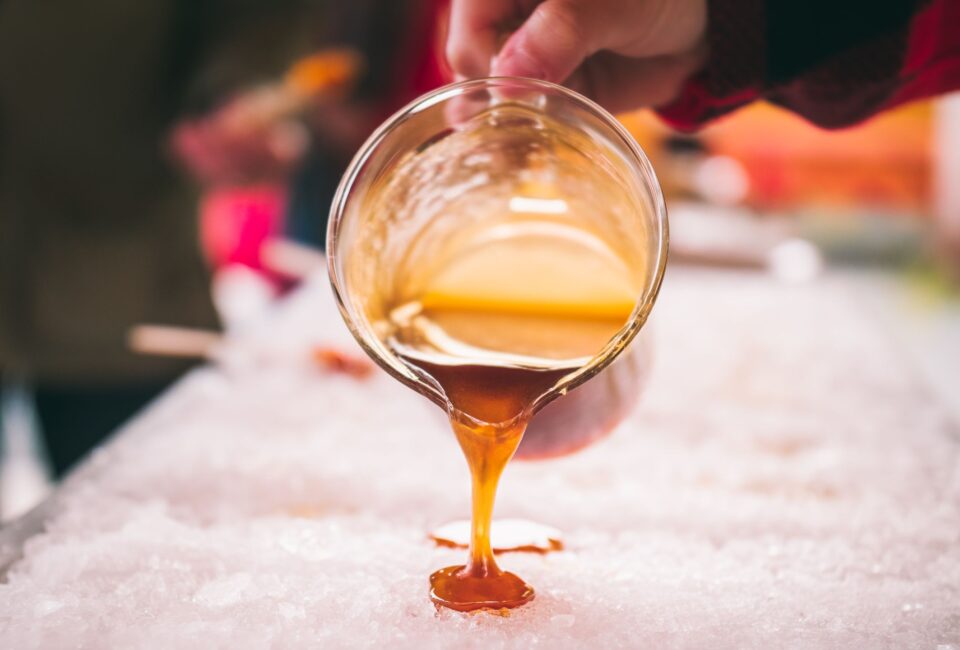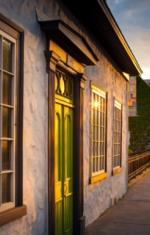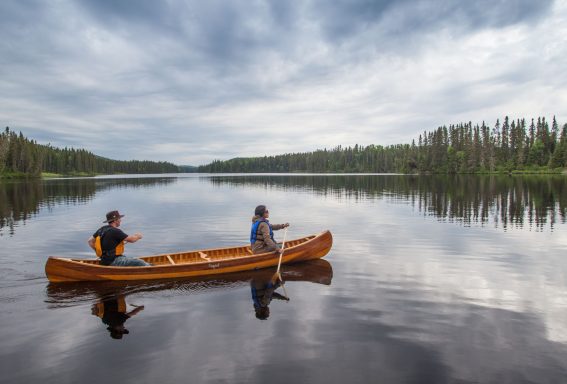From the early days of New France to the rise of industries that have shaped modern-day Quebec, the Authentic Quebec regions are steeped in history and traditions. Some of these traditions, such as the sugar season, have even deeper roots, with maple syrup being a true legacy of the First Nations. This spring, we invite you to take a sweet-and-salty journey through the eras and (vast) spaces of Lanaudière and Mauricie. Along the river, in the countryside, and even deep in the forest, history’s gems are waiting to be plucked at every bend. As for the sweet maple delights, they are the reward of this vernal road trip dedicated to all the “epicurious”.
These Memories That Flow Naturally in Authentic Quebec
Mauricie and Lanaudière have been at the forefront of Quebec’s history since its beginnings, and even before that, when these vast territories on the north shore of the St. Lawrence River were inhabited by First Nations for millennia. In the wake of the founding of the city of Quebec by Samuel de Champlain in the early 17th century, the two regions that now form Authentic Quebec were the first to see the development of the colony of New France. They experienced the golden age of the great seigneuries, the era of the first industrial settlements in the country, not to mention the sagas of forestry, paper pulp, aluminum, and hydroelectricity. Associated with the abundance of their water and timber resources, the central position of Lanaudière and Mauricie between the two major urban centers of the province makes these two regions a conservatory of the deep memory of Quebec.
Whether material or not, whether admired or savored, a rich historical and cultural heritage emerges in all strata of Authentic Quebec: on the banks of the river along the Chemin du Roy, on country roads, from a parish to an ancient seigneury, and even into the heart of the boreal forest, in those uplands where humans have had to show ingenuity to make a place for themselves. This is enough to inspire a multitude of historical escapades… And why not overlap your next trip to Authentic Quebec with the 100% Quebecois tradition of sugar shacks? It too is very much alive around here, especially in the spring, when the atmosphere of these high places of feasting and conviviality ignites. To put memory and taste buds in sync, here is an itinerary full of discoveries, between great pages, lesser-known slices of history, and exciting art of living. Starting from Montreal, take the back roads to explore the charming countryside of Lanaudière before venturing further north, to the threshold of Haute-Mauricie, and then descending towards Trois-Rivières to indulge in some sweet treats. This delicious journey finally takes the King’s Road to begin the return trip to Montreal, a natural way to complete the loop of memory on the first carriageway built in North America.
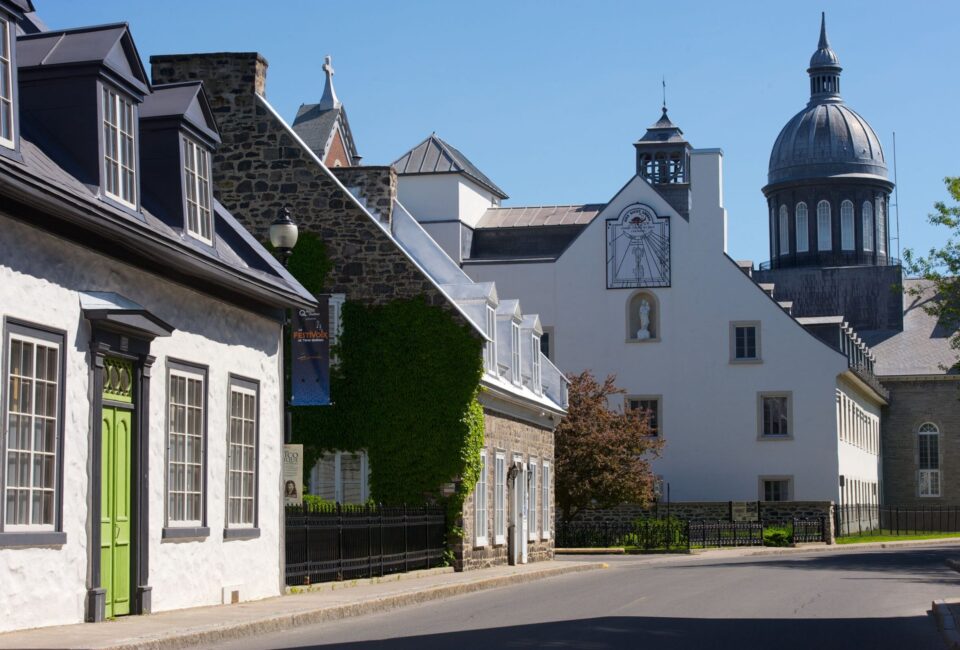
In Lanaudière, a Perfectly Signposted Tradition!
When it comes to Quebec traditions, one cannot miss the Carnival. And when it comes to the Quebec Carnival, one cannot miss Bonhomme Carnaval. The mascot of the event since 1954, this character is recognizable by his red hat, wide smile, and no less wide arrow sash. What does this have to do with the regions of Authentic Quebec? The history of the arrow sash, which became the very symbol of the inhabitants of Lower Canada in the 18th century, resonates strongly in Lanaudière, so much so that this element of the traditional costume of French-Canadians became the emblem of the region. The arrow sash recalls the time of the fur trade and the first exchanges with the First Nations. Finely woven by hand, it was worn by runners and other canoe-travelers who used it, among other things, to relieve their backs, but also as a trading object with the Indigenous people.
The artisans of Lanaudière, particularly in L’Assomption, where a trading post of the North West Company was located, developed a unique expertise in the 19th century that would give its nobility to the famous traditional sash whose patterns represent arrowheads flanked by lightning bolts. Such was its success that the “made in Lanaudière” arrow sash was known by Anglophones as the “Assumption sash.” Although L’Assomption, located a few kilometers from Montreal, no longer has its historic trading post, an interesting stop can be made in the Lanaudière hinterland, in Sainte-Marcelline-de-Kildare. The Maison du Fléché Bélanger is dedicated to the art of arrow sashes as it was practiced by a brilliant local craftsman, Pierre Bélanger (1942-1986). In addition to exhibitions on the iconic sash, workshops are offered to pass on this know-how, including spinning and natural wool dyeing.
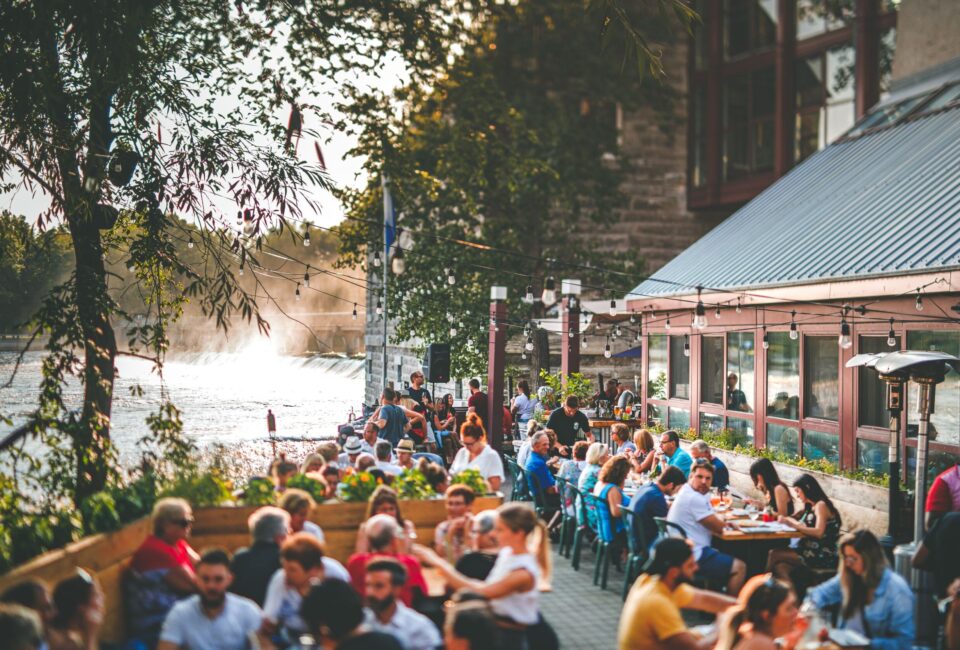
The Acadian Presence in Authentic Quebec, an Unknown Treasure
On your way from Montreal to the bucolic countryside of Lanaudière – where you may inevitably become a darting pro player – you will have passed through the town of Terrebonne. History buffs won’t miss a stop in Old Terrebonne, where the built heritage of Île-des-Moulins testifies to the splendor of one of the most important seigneurial estates in Quebec’s history, celebrating 350 years of existence in 2023. You are then invited to head north to a part of the region where several municipalities – Saint-Jacques, Saint-Alexis, Saint-Liguori, Sainte-Marie-Salomée… – tell a story that is just as old but even more singular. That of the Acadian families who founded here, in the 18th and 19th centuries, the New Acadia.
Saint-Jacques was the first parish to open its registers there after the Great Upheaval, which was the massive deportation of the Acadians by the British regime starting in 1755. Like its neighbors, the village has maintained powerful ties to its Acadian roots. Kept alive through traditions and cultural events, this connection is also embodied in an astonishing place where a stop is necessary for at least three reasons. Firstly, the Grand Dérangement Distillery pays tribute, beyond its name, to the founders of New Acadia by telling their touching story. Secondly, it is the only economuseum in Authentic Quebec, a place where the artisanal production of spirits is revealed from the grain to the bottle. Finally, and perhaps most importantly, you are in the first certified organic distillery in the province. Its products, made with local raw materials, are definitely worth tasting – with moderation, of course!

The Strong Man
Our journey through the great and small stories of Authentic Quebec continues one notch further north, as the landforms and the forest. Head to Saint-Jean-de-Matha for an extraordinary encounter with none other than the strongest man of all time. This latter, nicknamed the Canadian Samson, was called Louis Cyr (1863-1912). Endowed with phenomenal strength from an early age, he stood out for his feats of strength and even made a fortune, breaking all the records of his time. A career that brought the French-Canadian to perform throughout North America and in London, where he mesmerized a crowd of 5,000 people by lifting more than a quarter of a ton with a single finger, and a platform loaded with over 1.6 tons with his back, among other feats. His incredible story, his daily life, and the context of his time are recounted at the Maison Louis-Cyr, a building that the hero of Lanaudière lived in with his wife, herself a native of Saint-Jean-de-Matha.
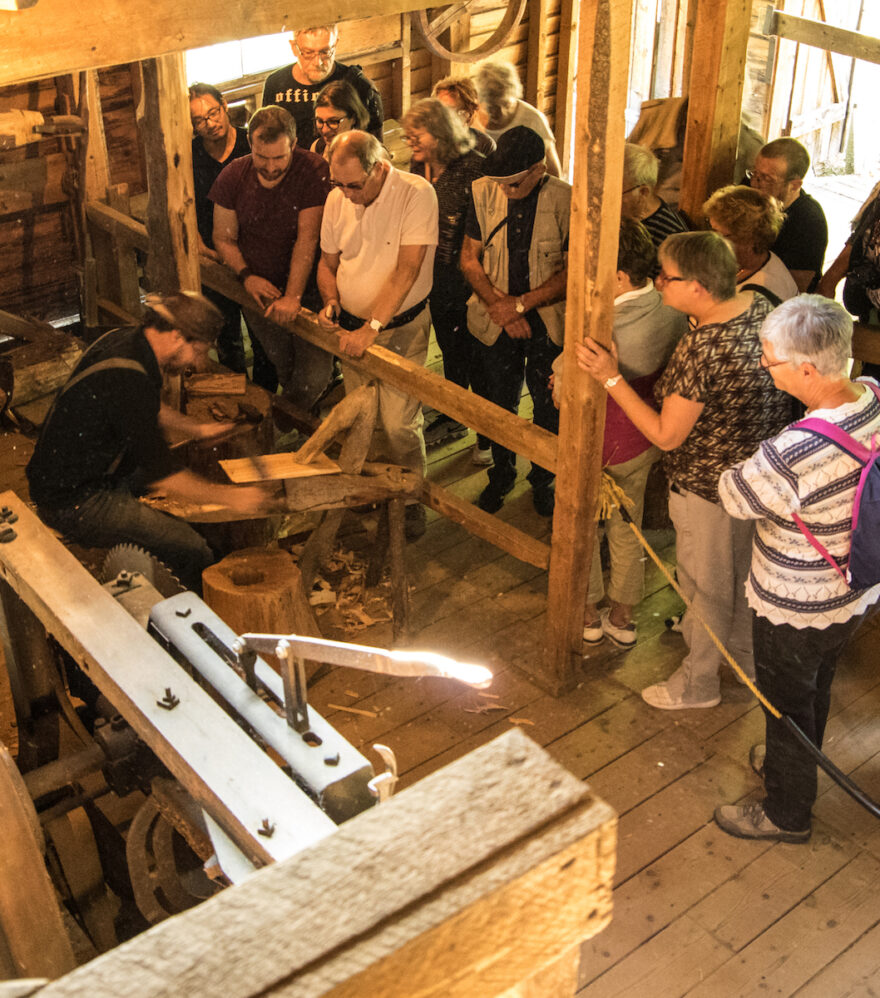
The Woodsmen
Them, too, needed a great deal of strength and courage. Them, who? The loggers who once worked in the heart of winter in the thick forests of Mauricie. As you may have guessed, our next stop takes us to the neighboring region. Near the Mauricie National Park, Grandes-Piles is a village proud of its history, which is intimately linked to the birth of forestry from the mid-19th century and to the log driving on the Saint-Maurice, this great river long used to float the logs downstream to Trois-Rivières. At the Village du Bûcheron, one is invited to immerse into the world of woodsmen of yesteryear. Through 25 faithfully reconstructed buildings, the guided tour will teach you a host of details about the harsh daily life of logging camps and traditional river drives, their rules, the different trades at work, but also the entire culture that was pulsing then, thanks to the animations of the guides, all musicians and storytellers.
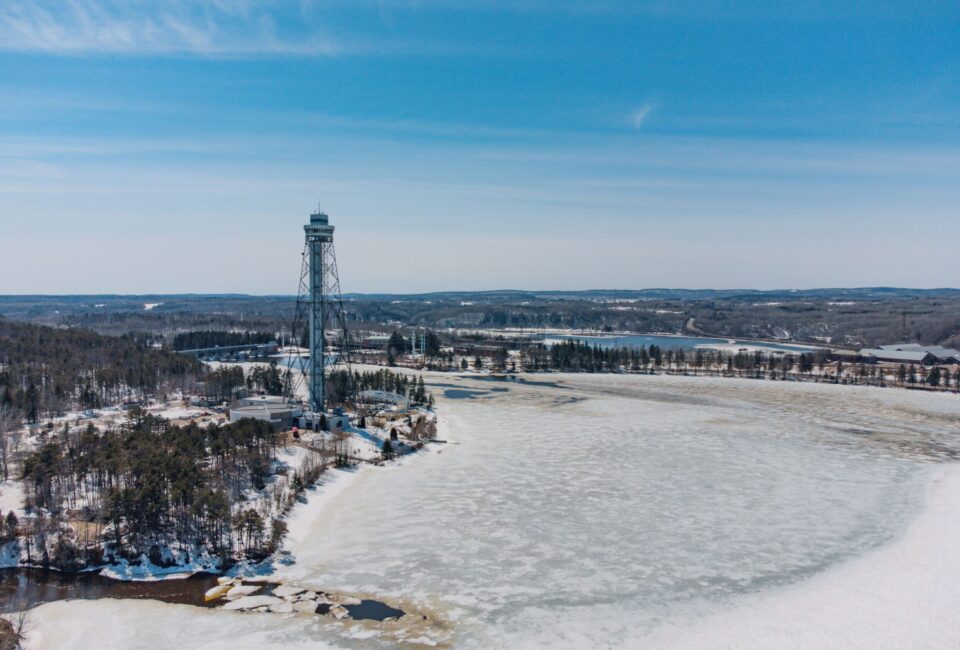
In Mauricie, a Plethora of Industrial Epics to be Traced
Heading back south on Route 155, you’ll follow the winding course of the majestic Saint-Maurice River, which was and still remains essential to the region’s development. The city of Shawinigan provides a dazzling demonstration of this fact, with the river being first and foremost an unparalleled source of energy here. A major attraction in Quebec, the famous Cité de l’énergie is easily recognizable from afar with its observation tower standing 115 meters tall, offering a breathtaking view of the city and its superb natural surroundings from the top. This unique heritage and museum complex will give you the inside scoop on energy in all its forms, from both a scientific and playful angle, whether through a large-scale multimedia show with special effects or through exciting exhibitions and activities. Exploring the historic district, particularly visiting the Shawinigan-2 hydroelectric power plant dating back to 1911, is particularly enlightening. Take the time to also visit the museum dedicated to former Prime Minister Jean Chrétien, a local resident. Surely, the current will flow between you and “Shawi,” and your batteries will be fully recharged as you hit the road towards Trois-Rivières.
It is precisely at the point where the Saint-Maurice River joins the mighty Saint Lawrence that Boréalis welcomes you. In the middle of the 20th century, Canadian International Paper (CIP) was considered the largest paper mill on the planet, producing nearly 1,000 tonnes of newsprint daily. Of this imposing industrial complex, one of the only remaining vestiges still standing is the former CIP water filtration plant, with its signature water tower. It is here that this unique museum has been set up, both to preserve the memory of this unique saga (the permanent exhibition “Roots and Identity” is not to be missed) and to pay tribute to the women and men who were instrumental in the development of the Trois-Rivières pulp and paper industry, from forest workers, loggers, and other river drivers, to the labourers who worked here. An interactive outdoor course, customizable immersive adventures – including fascinating underground vaults -, unique workshops and animations…
You won’t notice the time passing, yet we advise you to make time to discover yet another captivating site of significant historical importance. Slightly north of downtown Trois-Rivières, the Forges du Saint-Maurice National Historic Site is none other than the birthplace of the steel industry in Canada, whose very first blast furnace was lit during the summer of 1738, under the French regime. Significant archaeological work has made it possible to reconstruct the layout and operation of these forges, which played a major role in the development of New France. Exhibitions, immersive shows, an audio tour designed by storyteller Fred Pellerin, and period costume animations: Parcs Canada has created an outstanding visiting experience there!
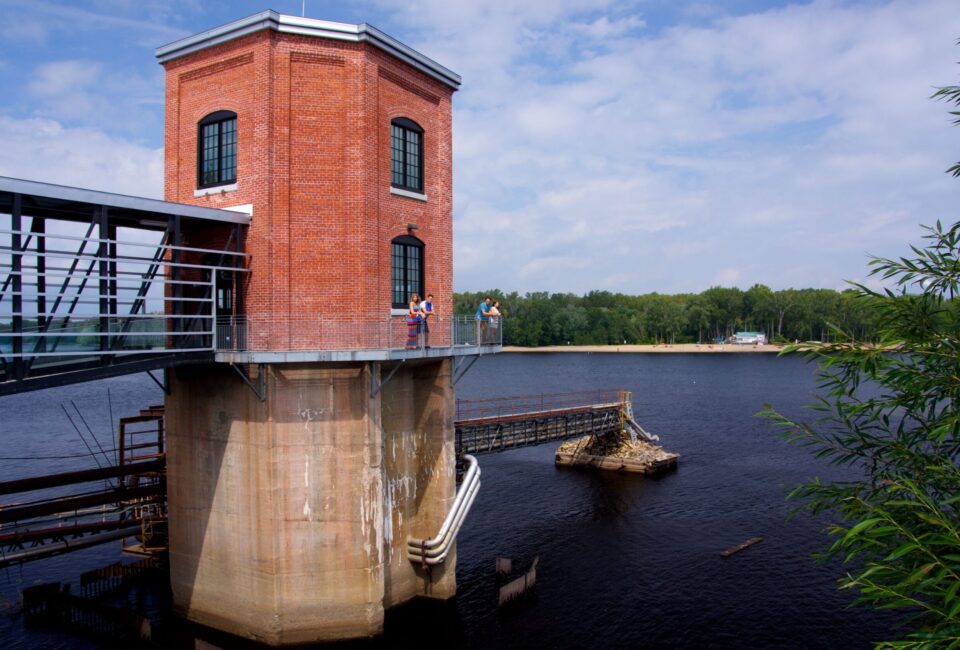
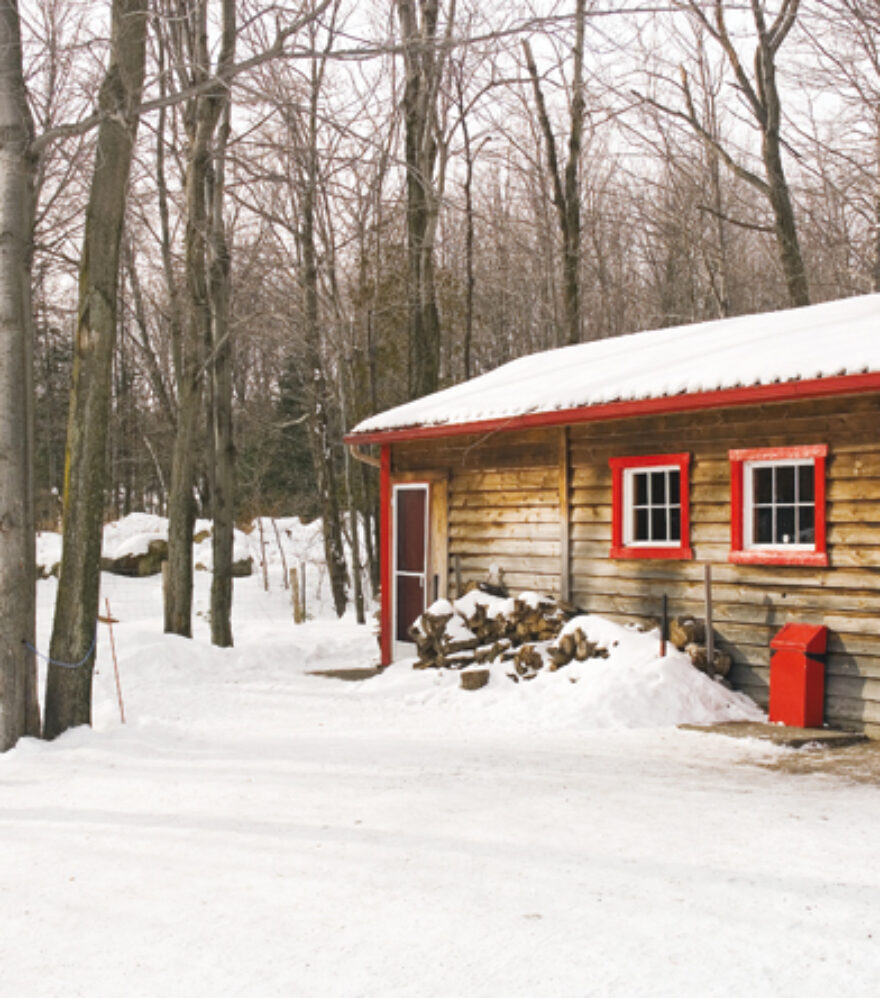
Sweeten Your Palate
Molten iron, the sweat of lumberjacks, and the rushing waters of rivers are not the only precious liquids that irrigate the history of Authentic Quebec. It’s time for our vernal journey to reward us with the long anticipated treat: maple syrup, just as it delights sweet tooths in the warmth of sugar shacks across the territory. It too comes from a very ancient custom, as the First Nations already knew the virtues of the water extracted from the sugar maple tree, Acer saccharum in Latin. The cast-iron cauldrons of the first French settlers made it possible to transform this wooded and sweet water into syrup as early as the 17th century. The golden treasure of Quebec was born, along with the tradition of sugaring off, namely the festivities surrounding the spring thaw, when maple sap flows abundantly and the kettles smoke. The sugar shacks then open their doors for festive meals generously drizzled with syrup. Pea soup, baked beans, pancakes, and maple taffy on snow are still at the heart of the traditional sugar party. There is no shortage of options in Mauricie and Lanaudière to experience this delicious and cozy interlude.
Since we are in Trois-Rivières, we recommend a place that honors year-round the delights derived from maple in an authentic atmosphere, including traditional cuisine, music, and good vibes: Chez Dany’s sugar shack.
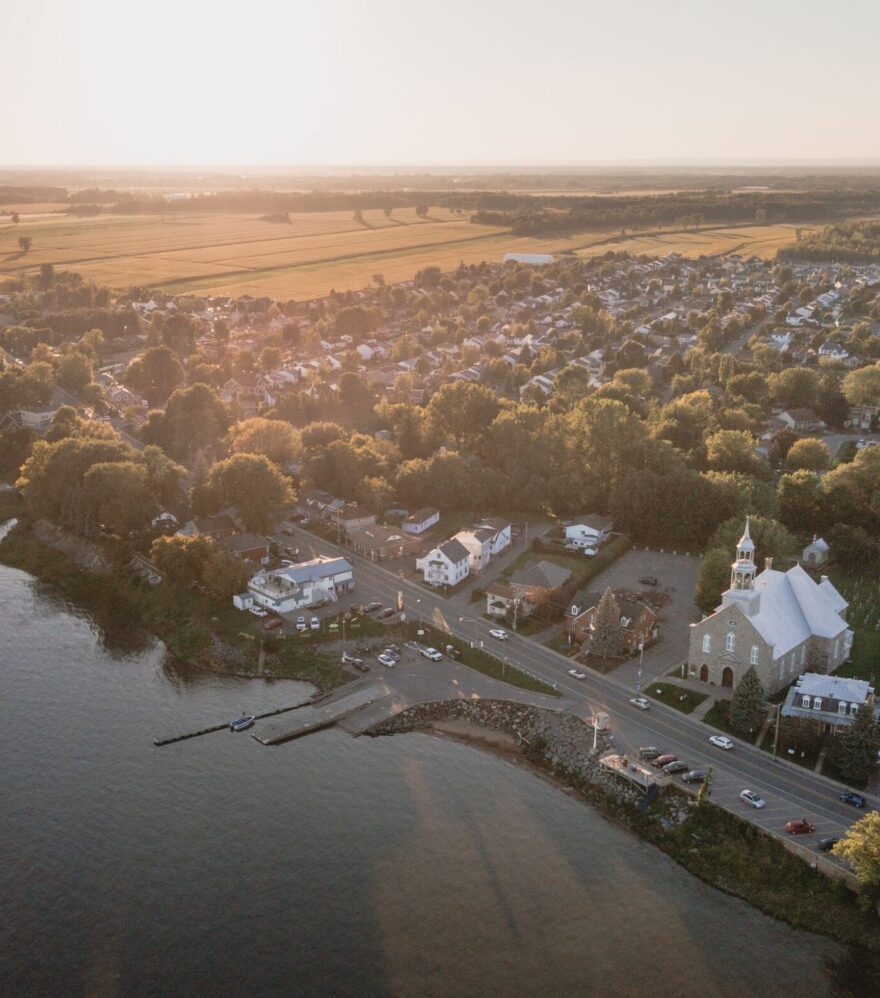
Wrap Up the Adventure in Style
After such a feast, it will be well advised to wrap up the adventure in style by taking a royal route back towards Montreal, because Authentic Quebec has many more slices of history and ways of life to share. When its construction was completed in 1737, the King’s Road became the very first carriageway in North America and the beating heart of the development of New France. Connecting Old Quebec to Montreal over 280 km, this portion of Route 138 follows the north shore of the St. Lawrence River and passes through many former seigneuries, towns, and villages in our two regions, forming a particularly rich circuit of historical attractions and built heritage, as well as scenic viewpoints of the river, not to mention cultural sites, gourmet haunts, and accommodations worth stopping at. An ideal way to conclude this tasty spring road trip with a thousand stories in the regions of Authentic Quebec.
